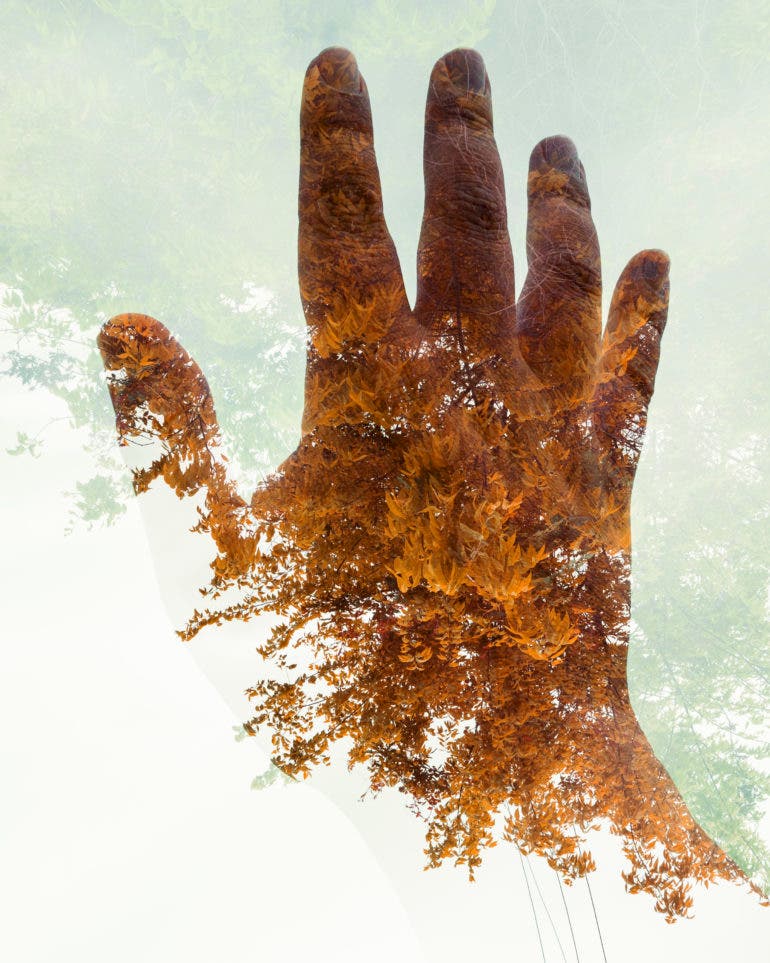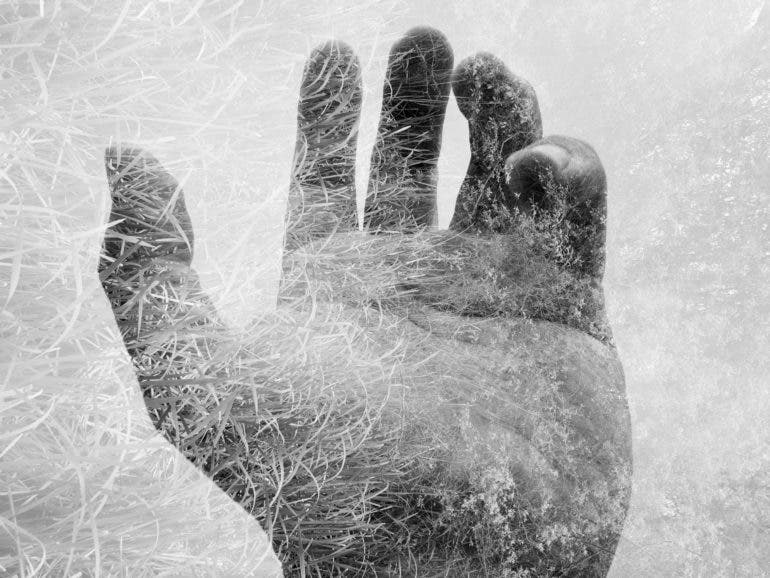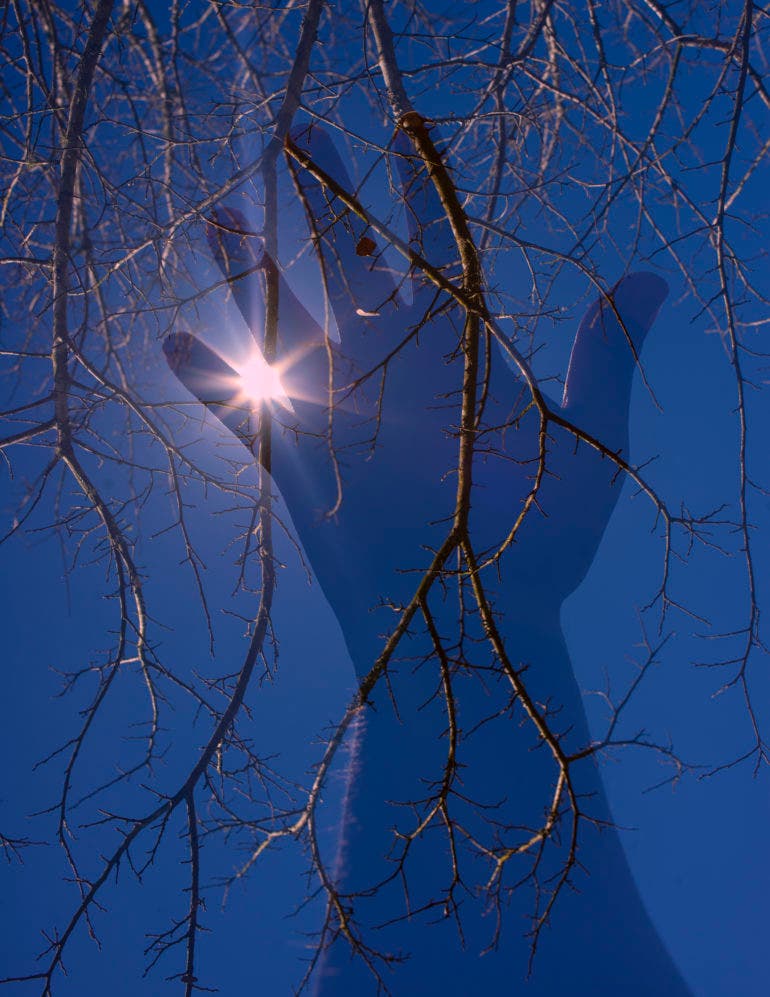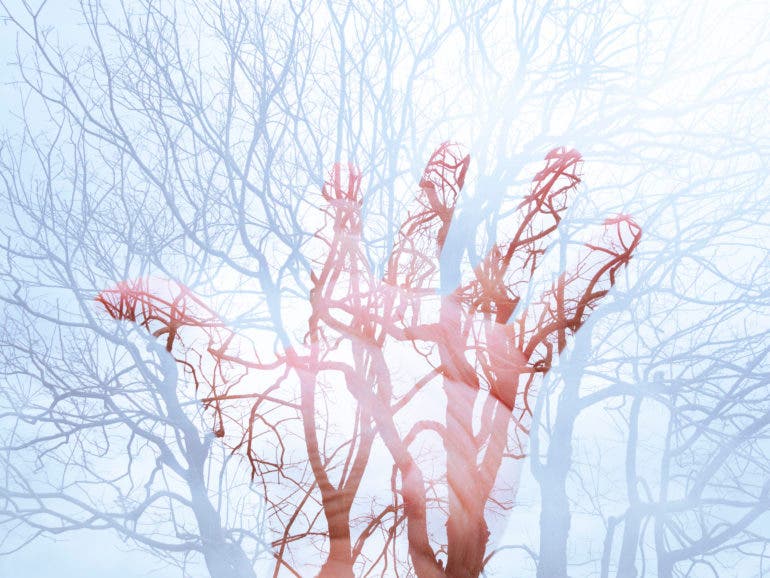Carlos Ocando’s Double Exposures are a Love Letter to the Natural World
All images by Carlos Ocando. Used with permission.
“I guess I’m using photography as a meditative process, and when I look through the viewfinder, everything disappears…” explains Carlos Ocando. He adds, “it’s just me and nature without all the craziness around.” Ocando is a seasoned photographer with a strong portfolio. His double exposures caught our eye, where his images seem like a visual representation of his relationship with nature. In what he describes as a “life-changing” journey, we caught with Ocando to learn more about his story within photography.

Phoblographer: You write that you’re inspired by the Japanese word “Komorebi”. Please tell us more about that in detail and how it motivates the way you approach photography.
Carlos Ocando: Komorebi is an untranslatable word from the Japanese language, which means sunlight filtering through trees. My relationship with Komorebi goes back to the beginning of my journey as a photographer.
There was this beautiful light filtering through and backlighting the leaves of different species of tropical trees. It was in a small square on my University’s campus. I became enamored with light before I even started to use my dad’s camera as a tool to capture nature’s beauty.

This connection with Komorebi changed the way I approach photography and life in general, it’s hard to put into words, but it’s like feeling a soft breeze in the afternoon that wakes you up from the craziness going around in your environment. It’s a silent moment where you feel everything stops, and it’s just you and nature.
Before that, I didn’t consider myself a photographer, artist or a creative person. But I felt the need to capture this feeling and express it in a way that I could share with the people around me.
Phoblographer: Talk to us more about your relationship with nature. What nature offers you, and how does it inspire your photography and your existence?

Carlos Ocando: Nature is an escape for me, a place where I feel I can be myself. I sing, dance, exercise, meditate and sometimes, I take photos. When I’m walking in nature, I feel I’m back home or waking up from a bad dream.
Nature has no expectations, no hidden agendas or bad intentions. To me, it’s a welcoming space where I can be creative without feeling criticized. A great environment to think, get philosophical, and learn from the cycles and experiences you can observe. I become one with it and allow it to guide me with no expectations or need to come back home with a “winner” photo.
Phoblographer: Your double exposures are beautiful. Please tell us how you create the images from start to finish.
Carlos Ocando: Thanks! I really enjoy making them. I capture these double exposures in-camera using the multiple exposure setting, allowing light, shape and color to blend together in a magical and sometimes unexpected way.
I shoot one image first, maybe a landscape or a small detail in nature, and then I take a photo of my hand. That’s it! The rest is done by light and the camera. It’s a very fun process of creation! There is a lot of experimentation involved, especially at the beginning. But I believe this is the most interesting part. To learn how the images blend together depending on the contrast, exposure, texture and composition.

I like to use the preview setting in my mirrorless camera, which allows me to have an image overlay for better control of the composition. With my DSLR, I have to use the grid lines in the viewfinder as a guide.
I also had to learn how to become a model and a photographer at the same time. I guess I could add hand model to my list of skills!
Phoblographer: What kind of changes do you make when editing?
Carlos Ocando: I don’t like to limit myself in the post-production process. First, I make the initial color correction, exposure, contrast curves and clarity in Lightroom Classic. Then I proceed to work on the image in Adobe Photoshop, here is where I make most of the color work and convert to black and white if needed. For the B&W conversion, I use Nik Silver Efex Pro. Sometimes I experiment with surreal colors or extreme white balance settings. The double exposures are apart from reality already, so I allow myself to experiment freely.

Phoblographer: Your home country Venezuela is known for its beautiful nature. What was it like growing up back home, and how did it impact you as a person and as a creator?
Carlos Ocando: What impacted me the most was the diversity. I grew up around a lot of trees, like mango trees and tropical almond trees, as examples. They have huge leaves and make the most beautiful sound with the wind. From those leaves, I created a series of still life portraits in black and white, and that was one of the portfolios from which I received my first international accolade.
There is so much diversity of plants in Venezuela. I remember once I collected a huge dried leaf from the floor of a museum patio that was about 16-inches wide and about 18-inches long. I had so much fun with my macro lens that day!

I’m from a small town called Maracaibo and it’s one of the hottest places in Venezuela. It’s located next to a big lake called Lake Maracaibo. In the lake there are small islands, and I would visit some of them with my friend and mentor, Albert Frangiéh. We would go and have fun photographing the small town and take long exposure seascapes from the piers.
There was also a city park called Vereda del Lago. I would go with my now wife Graciela and explore the park, collect dry leaves and take photos of the lake and detail shots from a great variety of trees.
Unfortunately, around 2012, it became difficult to go outside with my camera without the danger of being mugged or assaulted by the police. I miss Venezuela, and I hope one day it will become again the country that I remember when I found Komorebi and fell in love with photography.
Phoblographer: Are you packing much gear when creating this series? Tell us what’s in the bag and why it works for you.

Carlos Ocando: I usually take one camera with me, and for this series, I only use one lens. I love prime lenses, and most of my lenses are prime lenses. My favorite focal length is 35mm. Usually, these kinds of lenses allow you to focus really close. I need a very versatile focal length that allows me to shoot from landscapes to small details or my hand.
I work with two different systems. I have a Nikon D600 that I use with a Nikkor 35mm AF-D f2.0. I have an Olympus OM-D EM1 Mk II and an Olympus OM-D EM10 Mk IV. Most of the time I use them in combination with a M.Zuiko 17mm f1.8 and I experimented once with a zoom pancake lens that came with the EM10 MkIV. But most of the time, I use the 17mm f1.8.

I normally take with me one camera and one lens. This allows me to focus on the creative part of the process and not think too much about what focal length to use or what settings I need.
I like to shoot in Aperture priority mode, set it to f8.0, and I’m good to go. I like big messenger bags, so I carry everything on a Tenba Messenger bag or a Tamrac backpack. I use an ONA leather strap with the EM1 MkII and a Peak Design sling with the Nikon D600.
Phoblographer: What kind of feelings do you experience when creating your double exposures?
Carlos Ocando: It feels like I’m creating a fantasy or sci-fi story. I love to read and watch sci-fi and fantasy, and to me they are a big inspiration to capture these double exposures. It’s also a way to blend myself with nature in a way that feels like a dance where I and nature become one. So I feel excited, free and playful. It’s all about having fun and enjoying the present moment.

Phoblographer: And when looking at a finished image, what emotions does it evoke within you?
Carlos Ocando: Mainly excitement and a feeling of accomplishment. To me, an image is not ready until the post-processing is complete. I also like to add my images to a catalog in Lightroom. That way, I can see them together and see how the “story” is developing.
In the beginning, the images were giving me a comic book vibe, maybe from Marvel Universe, similar to the idea of Thanos Gauntlet and the Infinity Stones. But the work evolved beyond that in ways that I couldn’t predict. Some of the images with more green and blue with clouds, more inspired in René Magritte. The black and white photos are inspired by Jerry Uelsmann, who has been a great inspiration to me in general. I’m also a fan of ancient eastern philosophy, and you can see a bit of influence in the captions on my Instagram or in my blog on my website.

Phoblographer: Have you found your true artistic identity, or are you still looking? (explore the answer in as much detail as possible, please).
Carlos Ocando: Well, this is a difficult question to answer. To me, my artistic identity is defined by my language and what feelings or messages I express through them. Within this definition, yes, I have found my artistic identity by expressing peace, love for nature and fun philosophic ideas.
But on the standard definition of artistic identity, where most people expect all my images to look alike or have the same subject or colors, no. I don’t like to limit my creativity in that way. I love to explore multiple subjects, themes and genres of photography.

Phoblographer: Talk to us about some of the highlights of your career.
Carlos Ocando: Through out the 14 plus years of my career as a photographer, I’ve received a fair number of awards, and I’m proud of each one of them. Here is a list of a few of them:
- 2021 “Tokyo Foto Awards”, Honorable Mention, Tokyo, Japan.
- 2020 “15th Black and White Spider Awards”, Nominee (Finalist), Beverly Hills, CA.
- 2020 “International Photography Awards 2020” Honorable Mention, Fine Art – Still Life Category, New York, NY.
- 2019 “14th Black and White Spider Awards”, Selected as Nominee (Finalist) from a total of 6,418 entries, Beverly Hills, CA.
- 2017 “Houston Center for Photography 35th Annual Juried Membership Exhibition”, Official Selection, Curator: Dr. Rebecca Senf. Houston, TX.
- 2016 “USA Landscape Photographer of the Year 2016”. Finalist. United States.
- 2014 “Prix de Photographie PX3 Blue”. Honorable Mention. Paris, France.
- 2012 8th. Young Artists Salon. Honorable Mention. Zulia Contemporary Art Museum. Maracaibo, Venezuela.
- 2011 “Photography Masters Awards”. Nominee (Official selection). New York, NY. 2010 “Prix de la Photographie PX3”. Official Selection. Paris, France.
- 2010 “Prix de la Photographie PX3”. Official Selection. Paris, France.
- Photography can be life-changing for some. What impact has it had on your life?
It was life-changing for me when I found photography. I was in University on my way to start a career as an Electrical Engineer (which I didn’t enjoy at all) and fell in love with it. I loved it so much that I made a career change. After graduation, I decided that I wanted to start a career as a photographer instead.
It was a difficult decision that cost me financial stability and the possibility to make a lot of money in the beginning, but I don’t regret it. To me, life is not all about money but about living a full life where you enjoy the present moment as much as you can.

Phoblographer: Before you leave: if photography was a person that could talk and listen, what would you say to it?
Carlos Ocando: Maybe I would say, “Hey buddy are you ready to have more fun today?”
You can enjoy more of Carlos’ work by visiting his website and Instagram.